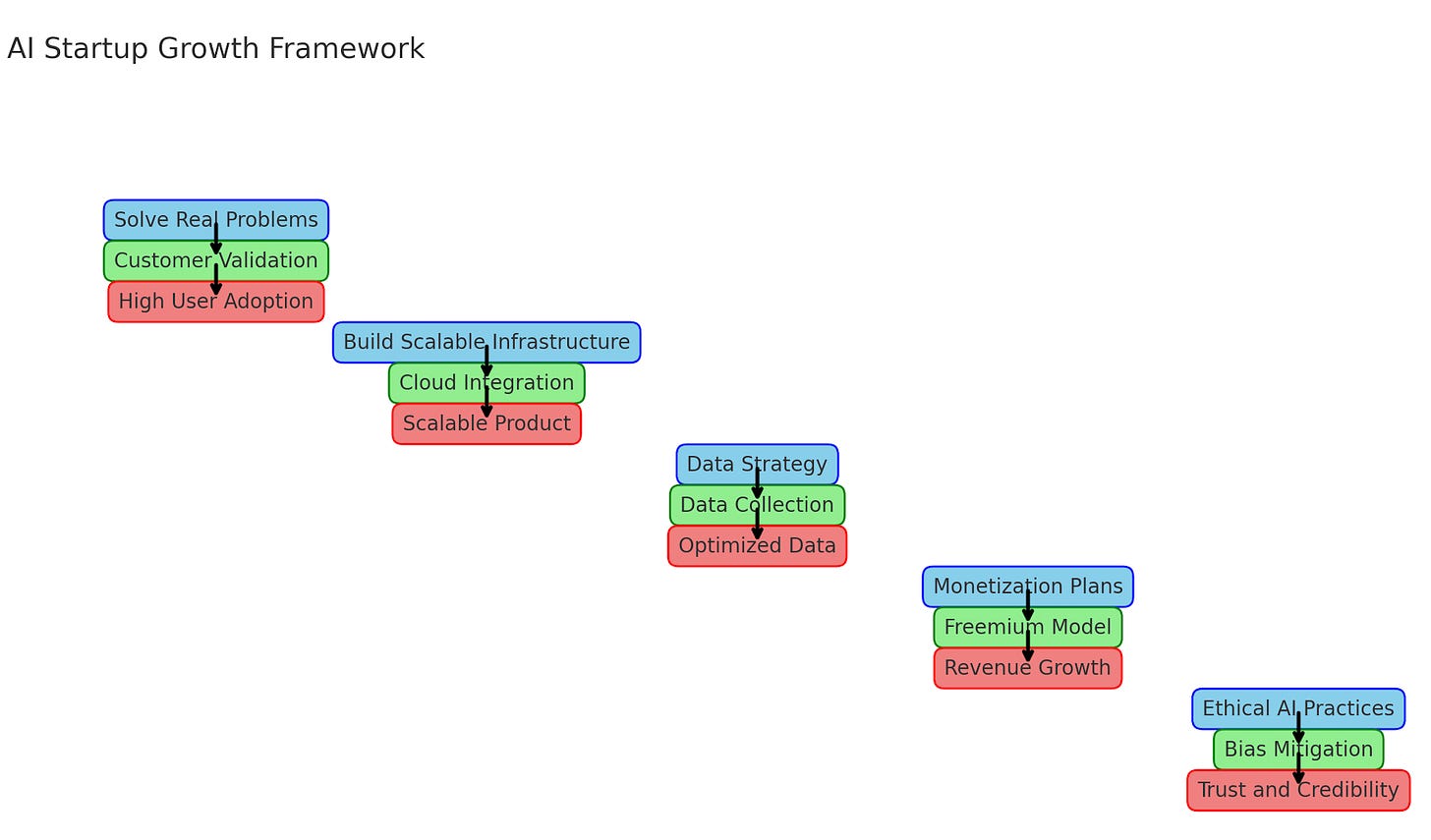- Growth Elements
- Posts
- How AI Startups Can Scale and Succeed: Strategies for Hypergrowth
How AI Startups Can Scale and Succeed: Strategies for Hypergrowth
Read time: 3 minutes.
Welcome to the 81st edition of The Growth Elements Newsletter. I write an essay on growth metrics, experiments, and business case studies every Monday and sometimes on Thursday.
Today's piece is for 6,500+ founders, operators and leaders from businesses such as Shopify, Google, Sage, Hubspot, Zoho, RateGain, Zaggle, Servcorp, and Apollo.
Today's The Growth Elements is brought to you by:
Your BILL demo + 🎁
Control spending with customizable budget controls.
Get real-time visibility into your finances.
Take a demo and get a gift.1
1 Terms and Conditions apply. See offer page for more details.
BILL Divvy Card is issued by Cross River Bank, Member FDIC, and is not a deposit product.
Break through plateaus on Meta and reach new audiences
Leverage authentic storytelling in competitive markets
Reduce CPAs by 25% while scaling your reach
Expand team capabilities without increasing headcount
Sleigh your team’s holiday gifts on Goody
Goody makes holiday gifting simple. No need for shipping details or sizes. Just set a price and let them choose. Send trendy gifts from top brands like JBL, Mejuri, and Therabody, or customize merch with your logo. Try it for free & get $20.
Thank you for supporting our sponsors, who keep this newsletter free.
Happy Monday!
Is solving real problems the missing link for AI startup success?
AI startups operate in a highly competitive and fast-evolving market. To succeed, they must combine tech innovation with robust business strategies.
Here are the key strategies I believe will help AI startups succeed
[1] Solve Real Problems
Focus on Use Cases: Identify and address specific pain points in industries like healthcare, finance, logistics, or marketing.
Example: AI startups like PathAI in healthcare focus on enhancing diagnostics and solving tangible challenges.
Customer-Driven Development: Work closely with early adopters to refine solutions based on real-world needs.
[2] Build Scalable Infrastructure
Leverage Cloud and Open-Source Tools: Reduce time to market using platforms like AWS, Azure, or pre-trained models.
Prioritize Scalability: Design systems that handle increased user loads without sacrificing performance or reliability.
[3] Data Strategy
Access to Quality Data: Establish partnerships to gain access to high-quality and diverse datasets. The quality of data often determines the quality of AI outputs.
Data Privacy and Ethics: Adhere to data protection regulations like GDPR and ensure ethical data use to build customer trust.
[4] Sustainable Business Model
Monetization Plans: Choose a model suited to your market, such as SaaS subscriptions, API usage fees, or licensing.
Asset-Light Operations: Focus on solutions with low incremental costs for higher margins, similar to OpenAI's API-based revenue model.
[5] Build a Strong Team
Hire Cross-Functional Talent: Combine technical experts (ML engineers, data scientists) with business professionals (product managers, marketers).
Focus on Culture: Promote a culture of innovation, agility, and continuous learning.
[6] Go-to-Market Strategy
Target Early Adopters: Focus on industries and customers that are open to experimenting with AI solutions.
Showcase ROI: Clearly articulate the ROI for using your product to drive adoption.
Freemium Models: Offer a free version to encourage widespread adoption, as done by companies like OpenAI and Grammarly.
Network Effects: Build products that improve with user input, creating a self-reinforcing growth loop.

[8] Strategic Partnerships
Collaborate with Enterprises: Partner with large companies to access distribution networks, data, and markets.
Integration with Ecosystems: Embed your product into larger ecosystems (eg: integrating with CRM tools like Hubspot).
[9] Ensure Investor Alignment
Investors look for scalable solutions and transformative ideas.
Showcase Traction: Highlight early successes, such as adoption metrics or pilot results.
[10] Ethical and Regulatory Challenges
Proactively Manage Risks: Address ethical concerns like bias, privacy, and accountability upfront.
Stay ahead of Regulations: To avoid legal complications, comply with laws and industry standards, such as the EU AI Act.
[11] Continuous Product Iteration
Adopt Feedback Loops: Use customer feedback and performance data to refine and improve your product.
Rapid Experimentation: Leverage agile methodologies to test new features and innovations quickly.
[12] Build Trust and Credibility
Transparent AI: Clearly explain how your AI works to mitigate fears around “Black-box” algorithms.
Showcase Success Stories: Highlight customer testimonials and case studies to build credibility in the market.
Final Words
AI startup success hinges on balancing cutting-edge innovation with a clear focus on customer needs, scalable infrastructure, and ethical practices.
By aligning these strategies with a strong vision and execution plan, startups can survive and thrive in a competitive market.
That's it for today's article. I hope you found this essay insightful.
Wishing you a productive week ahead!
I always appreciate you reading.
Thanks,
Chintankumar Maisuria

